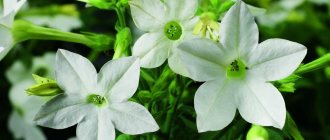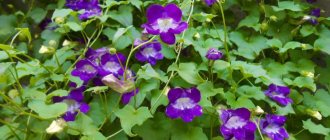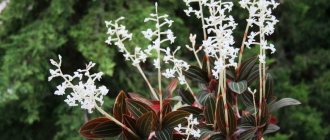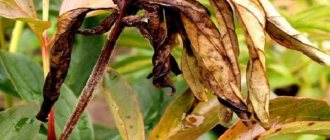Calendula is also called marigold. This herbaceous plant belongs to the Asteraceae family. In nature, marigolds can be found in Western Asia, the Mediterranean, and also in Western Europe. The name of this flower comes from the Latin word calendae, which means “first day of the month.” This genus includes about 20 plant species, among which there are both annuals and perennials. There are types (for example, medicinal marigolds) that are not only very beautiful, but also have healing properties. These properties were first mentioned by Dioscorides, who lived in the 1st century AD. e. and was an ancient Greek physician and philosopher. Marigolds were also used to create healing remedies by Galen, Avicenna, Amirdovlat Amasiatsi and the famous herbalist Nicholas Culpeper. Once upon a time, marigolds were used as a vegetable plant, so they were used to make wine, pudding, fillings for dumplings, and they were also put in oatmeal and soups. This plant was called the poor man's spice. The fact is that overseas spices were very expensive, and calendula could be an excellent replacement for saffron. It made dishes more tart and gave them an orange-yellow tint. This plant has gained immense popularity in European countries. Shakespeare himself mentioned such a plant in his work, while Queen Margarita of Valois (Queen Margot) of Navarre preferred marigolds to all other garden flowers.
Botanical description
From the photo of calendula, many people know what this plant looks like. The flowers are yellow and orange, grouped into single inflorescences - “baskets”. The calyxes reach 4 cm in diameter.
The outer part of the flowers consists of elongated petals. In the center there are small tubular flowers.
The leaves of calendula are alternate and oblong in shape. Stems are erect and branched. They can reach 70 cm. The plant blooms from June to September. Domesticated flowers are larger.
Types and varieties of calendula with photos and names
Only 2 types of marigolds are cultivated.
Field calendula (Calendula arvensis)
This species is not as popular as marigolds. The bushes grow up to 0.3 m in height. The flowers of this plant are reed-shaped, and they are colored ocher-yellow. Under natural conditions, such a plant can be found in wastelands, as well as in those areas that have been abandoned, located in the southern part of Europe. This plant must be grown in the same way as calendula officinalis.
Calendula officinalis (Calendula officinalis)
Or marigolds, or calendula, or marigold, or balaban, or crocos, or roast
This annual herbaceous plant can reach a height of 0.2–0.75 meters. The ribbed, pale green stems are quite thick, and have glandular, sticky pubescence on their surface. Simple leaf plates can be elongated or oval. On their surface you can see sparse, very hard hairs. The inflorescence baskets have a very pleasant smell that can invigorate. The inflorescences consist of orange or yellow reed flowers, which are glossy on top and matte below, as well as small tubular flowers that can be painted dark brown, yellow or orange. Flowering with proper care is quite long (from June to November). It bears abundant fruit. Breeders are always trying to develop new varieties, and their activities are divided into 2 areas: decorative and medicinal. American and European breeders are busy developing more and more decorative forms. For example, there is a group of Pacific Beauty varieties, which is a form of marigolds used for cutting, while the bush can reach 0.7 m in height, and the diameter of the baskets reaches 9 centimeters. There is also a group of Patio varieties, which is represented by small plants (about 0.3 m). And in the Kablun group there are anemoid-shaped varieties - their tubular flowers have grown relatively large.
The best decorative varieties include:
- Sonnenstein . The bush is quite compact and reaches a height of only 0.4 to 0.5 meters. The ribbed, strong stems are pale green in color. The large oblong leaf blades are also pale green. The rich yellow semi-double inflorescences have a diameter of 7.5 centimeters, while their reed flowers are curled downwards.
- Yuvel . The spherical bush can reach a height of 0.4–0.5 meters. Its pale green shoots have an irregular pentagonal cross-section. Pale green large and wide leaf blades have an oblong shape. The diameter of semi-double or double inflorescences is from 5 to 8 centimeters. They consist of yellow tubular florets and flat reed florets, colored salmon-orange.
- Radio . The height of the bush can reach from 0.35 to 0.45 meters. The ribbed stems are quite powerful. Pale green large oblong leaf plates have raised veins on their surface. The inflorescences can be semi-double or double, while they are hemispherical and reach 6–7 centimeters in diameter. The tubular flowers are orange-yellow, while the rich orange reed flowers are ½ of the way wrapped into a tube; at the base they are orange-yellow in color. Radio
- Sensation . The bush can reach 0.45 meters in height. The leaf blades are dark green. The diameter of semi-double or double inflorescences is from 7 to 8 centimeters. They consist of large glossy deep orange reed flowers that are arranged in a tiled manner, with the tubular flowers being yellow.
- Meisterstück . The height of the bush is about 0.45 m. The rich green leaf plates are quite large, elongated and widen upward. The diameter of semi-double and terry baskets is from 6 to 8 centimeters. Their tubular flowers are pale brown, and their reed flowers are paddle-shaped, slightly concave and have a deep orange color.
Also especially popular are varieties such as: Orange Koenig, Gold Koenig, Gold Kugel, Canarienvogel, Kabluna Gold, Calypso, Golden Emperor, etc.
Of the medicinal forms, the greatest interest is generated by such varieties as: Kalta, Ryzhik, Sakharovskaya orange and others, which were created by Russian breeders.
Varieties of calendula
There are about 20 species and varieties. The development of new varieties is carried out simultaneously in two directions:
- medical;
- decorative
For today's laziness, the best varieties of decorative calendula are: Yuvel, Radio, Sensation. Among the medicinal species, the most valuable are: Ryzhik, Sakharov orange.
Calendula officinalis (marigold)
Height up to 70 cm. Flowers are bright yellow. They have a refreshing aroma. The stems are highly branched.
The most common type. Seeds retain the ability to germinate for up to 5 years!
Decorative types of calendula officinalis are in priority due to their larger size and length of flowering.
Calendula field
It grows only up to 30 cm. The “baskets” are pale mustard or ocher in color, only 2 cm in diameter.
Not popular, because... The flowers are quite small and inconspicuous.
Types of calendula
Of the several dozen species of calendula, only two main ones are grown in gardens. Let's tell you more!
Field calendula
This is a more decorative variety with large simple inflorescences up to 9 cm in diameter. The bushes themselves are small, 10-30 cm, and practically do not branch.
Photo: vikings-warofclans.ru
Medicinal calendula
The same type that is still used in medicine. This category is more diverse, including double and semi-double varieties. But the diameter of the inflorescences is on average smaller - up to 7-8 cm. But the straight stems are taller - up to 50-75 cm.
Photo: zen.yandex.ru
Monarda (50 photos): types, planting and care in open ground
Properties of calendula
Benefit
Calendula has an incredibly rich composition:
- minerals (fluorine, zinc, magnesium, iron, iodine);
- vitamins (B1, C, E, F, K and others);
- essential oils. This means that the plant has an antimicrobial, calming effect;
- flavonoids are an excellent antispasmodic;
- carotenoids - substances that participate in the synthesis of the most important vitamin A;
- coumarins – have analgesic and anti-inflammatory properties;
- sterols – reduce cholesterol levels.
You can continue for a long time... In addition to all of the above, the calendula plant is a valuable honey plant. Also, few people know that marigolds were also used as a vegetable plant: they were added to soups and puddings.
Harm
You should not take preparations prepared from marigolds in the following cases:
- allergic reaction to the plant and its components;
- bronchial asthma;
- exacerbation of ulcers;
- low pressure;
- pregnancy;
- children under 3 years of age - if used externally, and children up to 10 years of age - if used intravenously.
Calendula flower: description
Calendula is a flower common in temperate climates on all continents. It is decorative, it can be planted in flowerbeds, arabesques, mixborders and used as a potted and indoor plant. The peculiar aroma emanating from the stems and flowers is soothing and relaxing.
Structure of a calendula flower
The original habitat of the grass has not been identified. Natural thickets of various species are found in western Europe, on the Mediterranean coast and in southwest Asia. Perennial forms of calendula are found there.
Common types are herbs with a height of 20 to 70 cm. If the soil on which the plant is located is rich in organic matter, then the bushes are very spreading and can reach 70-80 cm in diameter. Let’s take a closer look at what the most common calendula looks like.
Calendula seeds
According to the botanical description, all representatives of the Calendula genus are herbaceous plants. The shoots are light green, ribbed. The leaves are oval, smooth edges, light green in color. All parts of the bush are covered with hairs that form pubescence, sticky and odorous on the shoots, more or less pronounced in different varieties. The root system is taproot.
Inflorescences are baskets of orange or other colors that contain tubular (in the center) and reed flowers (petals) with pistils and stigmas. After pollination they produce seeds. Reed flowers are sterile. The seeds of calendula flowers vary in shape, mostly curved, light gray or sandy in color. They can be picked slightly greenish and dried under a canopy or indoors.
For your information! Calendula herb in the garden has the ability to repel insect pests, and its infusions can be used as a natural insecticide.
When does calendula bloom?
Depending on the variety, flowering occurs 40-50 days after germination. Therefore, to understand when calendula will bloom, you need to remember the date of its germination.
Usually the bushes bloom at the end of May, and the height of flowering is observed in June. At this time, a massive collection of material is carried out. After removing some of the flowers, the shoots continue to grow and form new buds. Thus, calendula blooms throughout the summer until frost sets in.
Beneficial properties of calendula
The benefits of the herb are determined by the chemical composition of the raw materials. The flowers of the plant contain:
- carotenoids;
- essential oils;
- salicylic acid;
- flavonoids;
- saponins;
- alkaloids in small quantities.
Type of packaging of suppositories with calendula
The rich composition determines the beneficial properties of calendula herb:
- bactericidal - effective against streptococci and staphylococci;
- wound healing;
- anti-inflammatory;
- calming.
In folk medicine, marigolds are used internally in the form of water infusions to improve bile secretion and as a sedative. Externally, alcohol and vodka tinctures, water infusions - for gargling and sore gums.
Calendula tablets
The pharmaceutical industry produces ointments and tinctures based on marigolds. The flower is part of the drug "Rotokan" for gargling. Ointments are used to treat burns, difficult-to-heal wounds and ulcers. The medicine "Caleflon" is an antiulcer drug, suppositories are used for anal fissures and hemorrhoids, and women's diseases. Tablets are used to treat diseases of the gastrointestinal tract.
Note! Since the active substances are potent, there are contraindications to the use of marigold preparations.
Growing
If a flower is not only beautiful, but also useful, it will definitely find its place on the site.
Growing calendula is possible in two ways: in open ground and using seedlings.
Planting in open ground
The simplest option. Calendula is most often planted in April, but it is also possible in October. It is planted in the spring, when the earth not only warms up, but also dries out.
To determine the readiness of the soil, throw in a lump of earth - if it crumbles, you can plant. It is best to dig up the site in the fall, using humus, urea, and phosphorus additives.
Calendula seeds are sown in the soil to a depth of 2 cm. The intervals between seedlings are maintained at 25-30 cm. After 2-3 weeks, the first shoots will appear. They should be thinned out. The excess ones can be transplanted to another place - calendula tolerates “moving” very well. The marigolds will see their first flowers in 10 weeks.
Sowing seeds for seedlings
This is done if you want the plant to bloom earlier. Seeds for seedlings are sown in late March or early April. You can plant them in a separate cup, or in a common box.
Seedlings should be covered with film and maintained at a temperature of 18-20°C. With the appearance of the first shoots, the film is removed and the temperature is reduced to 15°C.
The strengthened seedlings are sent to a permanent place. Planting in the ground is carried out in May, when the plant has several true leaves.
general description
Calendula is a branched flowering annual or perennial that can take a herbaceous or subshrub form. Belongs to the Astrov family. The stems are pubescent, straight, lodging in most species, with a ribbed cross-section. The arrangement of the leaves is alternate, their shape is oval-elongated or lanceolate. Long peduncles bear buds high above the curtain, forming at the ends single basket-type inflorescences, painted in a sunny range of colors - from pale yellow to deep orange with a brown-burgundy edging.
Flowering is very long, lasting almost the entire warm season. The buds open anew every day and close in the evening at sunset. Only in the most cloudy and rainy weather can they remain closed all day.
Calendula seeds have a curved shape, which led to the popular name of the flower “marigold”. Their germination persists for 4-5 years.
Care
Marigolds are not picky about conditions. The flower loves sunlight and well-drained soil.
Care consists of timely watering, periodic weeding and feeding.
You should know how to water the plant: regularly, avoiding excess moisture. On hot days, water generously.
The flower can withstand night frosts. But for this, hardening must be carried out before planting. Boxes with seedlings are taken out into the air for a week.
At the beginning of flowering, calendula can be fertilized with nitrogen - it promotes the growth of green mass. You can also spray with fertilizer containing boron for long and lush flowering.
Caring for calendula in the garden
Marigolds do not require complex care. The plant needs watering only during periods of prolonged drought.
It is also advisable to loosen the soil next to the calendula and remove weeds from it. Feeding marigolds for lush flowering is needed no more than once a month.
For reference! Modern marigold varieties have not fully acquired the ability from their predecessors to tolerate dry periods without difficulty.
On ordinary summer days, marigolds need to be watered either every other day or 2 times a week, and if there has been no rain for a long time, then the plant requires daily watering. When the weather is rainy, the plants need irrigation.
When growing such a crop, it is necessary to take into account that after the opened inflorescences acquire a horizontal position, it is necessary to remove all fully blossomed calendula flowers.
This is necessary to increase the flowering time of the plant. Moreover, such a procedure should be regular and not one-time.
If you neglect this procedure, then by the end of July the marigolds will completely fade.
Also, in order to prolong flowering, prevent possible self-seeding and preserve the decorative appearance of the plant, it is necessary to tear off all the stems with green seeds.
Most varieties can develop without fertilizing and bloom without particularly careful care.
However, minimal care is not suitable for cut varieties and double forms of marigolds; these plants require more responsible supervision and care.
Pests and diseases
Marigolds are susceptible to pests and diseases. More often, leaves and stems rot due to too frequent planting, dampness and cold weather.
In such conditions, marigolds are more vulnerable to bacterial and fungal infections.
These flowers are more often infected with black spot or powdery mildew.
The infected plant does not tolerate cold weather well.
Calendula diseases can be cured by treating infected bushes with fungicidal preparations:
- Topaz;
- Speed;
- Topsin;
- Fundazol.
Pests that can potentially attack calendula include:
- sciarids;
- aphids;
- wireworms;
- idiots.
They are destroyed using insecticides. Also, in order to reduce the likelihood of plant diseases and pest attacks, it is advisable to change the growing area annually.
Pests and diseases
Most often, marigolds are affected by black spotting. To prevent this problem, you should avoid excessive fertilization and also maintain distance between seedlings.
Occasionally, calendula is affected by powdery mildew and aphids.
Where does calendula grow?
This plant is native to the Mediterranean and Southwest Asia, but today it is also widespread in European Russia, Belarus, Ukraine and the North Caucasus. A moderately warm and warm climate is preferable for it, so it is found in Southern Europe, Asia Minor, and Iran. But despite this, calendula can feel good in cool climates. This unpretentious plant grows on any soil, decorating summer cottages with its brightly colored delicate petals. Many people know what calendula looks like.
Even the inhabitants of ancient Rome noticed that bright yellow flowers similar to the sun unfurl after the luminary, opening their petals like the hands on a clock dial. With the appearance of shadow, the flower closes, which is why it is called the sun dial and sun flower.
How to dry calendula correctly
Flowers must be collected in dry weather. The flowers are laid out in a thin layer on paper in a room with good ventilation. It is not recommended to use an electric dryer, because... Some of the beneficial properties will be lost.
To understand whether the calendula has dried or not, you should press your finger on the inflorescence. If the flower has dried well, the “basket” will disintegrate into petals.
Dry flowers are stored in cardboard boxes and glass containers. It is recommended to update the “harvest” annually.
Planting in open ground
Seedlings are planted in open ground in early May. By this time, each bush will grow 5-6 true leaves.
Medium-sized and tall plants are planted in flower beds and beds 30–40 cm apart. Between low-growing bushes, an interval of 15–25 cm is sufficient, while the distance between rows should be greater – 30–50 cm.
To use the site economically and to protect other crops, calendula is planted next to vegetables and garden plants. At the same time, its allelopathic properties are taken into account. Not all cultures will benefit from such a neighborhood. Calendula root secretions inhibit the growth of melon, watermelon, basil, and radish. At the same time, calendula attracts pollinating insects and repels pests from onions, strawberries, and gladioli. Next to it, the aster has less chance of getting blackleg.
The use of calendula for various diseases
Domestic pharmacists value the plant very much. The flower is used in:
- cardiology;
- cosmetology;
- gynecology;
- gastroenterology;
- dermatology.
In medicine, the plant stands alongside such “helpers” as St. John’s wort, chamomile, and sage.
Remedies from the flower can be taken both internally and externally.
Flowers are most often used. Thus, they contain natural lutein, which helps improve vision. But it’s no secret that in the modern world people spend a huge amount of time at the computer.
Calendula propagation
Marigolds are propagated only by seeds.
Fully ripened fruits are gray-brown in color.
They easily fall apart into pieces.
The collection of marigold seeds starts in July and ends in September.
For storage, paper envelopes and bags are used, which can be transferred to wooden or cardboard boxes.
The germination rate of plant seeds remains high for 3-5 years.
The plant is capable of self-propagation by self-sowing.
Due to high germination rates, without significant effort it is possible to ultimately obtain large volumes of material for planting. But because of this, during the development of the plant, it requires at least 2 thinnings.
Calendula tincture
Marigold tincture is a common home remedy.
You will need 1 tablespoon of flowers (preferably fresh). They are filled with vodka (half a liter). Leave for 10 days in a cool, dark place. After cooking, strain. The tincture retains its beneficial properties for six months.
The decoction is used for quick healing of cuts, gargling for sore throats, and to “disperse” bile.
As a rule, the average dose for an adult is 20-30 drops three times a day. The course lasts no more than two weeks.
As you can see, planting and caring for calendula in open ground does not require much effort. And with the help of this incredible multifunctional flower, you can not only decorate your flowerbed in an interesting way, but also improve the health of your entire body.
Chemical composition of calendula
The composition of the beneficial elements of the plant is very extensive; we will present only the main ones, the most important for medicinal use.
- Carotenoids. Help relieve inflammatory processes and have an antitumor effect, including malignant neoplasms.
- Sterols. Helps in the functioning of the heart and blood vessels, removing bad cholesterol.
- Triterpenoids. Stabilization of blood glucose levels, stimulation of the immune system.
- Flavonoids. Complex effects, including restoration of mucous membranes, removal of toxic substances, bile and radionuclides, relief of spasms.
- Calenden. Rapid scarring of skin lesions, prevention and treatment of dermatitis and eczema.
- Coumarins. Reducing the risk of thrombosis, increasing vascular elasticity.
- Lactone. Antitumor effect.
This is not a complete list of the beneficial properties of calendula and the beneficial elements it contains, vitamins, acids, etc.
Photo of calendula
The benefits of calendula for the garden
Calendula, the description of which indicates the colorfulness and decorativeness of the flower, is widely used to decorate the site. But besides this, marigolds have the properties of protecting crops. Where this flower grows, no nematodes are observed in the soil. It protects strawberries from ticks. By planting calendula between the beds and near the bushes, you can get rid of aphids, raspberry flies, and leaf-eating insects. Marigolds planted near roses protect them from many diseases.
The soil under the flowers is disinfected, all pathogens are destroyed. Where calendula grows, the rest of the plants look healthy and blooming.
Timing for planting calendula seeds
You can grow calendula from seeds by sowing in open ground or seedlings. In the second case, it will bloom earlier. Marigold seeds are sown in open ground at two times: in the spring, when the soil thaws and dries, and in the fall, before the onset of stable frosts.
In the middle zone, the optimal time for spring planting is the second and third ten days of April. The soil is considered ready if the thrown lump of earth crumbles.
Autumn planting of calendula in the ground occurs when night frosts become regular, the soil is not yet frozen, but warm days are no longer expected.
If you sow calendula before the onset of cold weather, the seeds will have time to hatch and then the seedlings will freeze. In order not to make a mistake in the timing, you can sow in the prepared furrows after the top layer has frozen, covering it with soil that was prepared in advance and kept in a warm place.
The timing of planting calendula for outdoor cultivation may vary in different regions. An inexperienced gardener can check them with neighbors in their summer cottage.
Marigolds are sown for seedlings from late February to early April. After planting, the containers are watered with settled water and covered so that the soil does not dry out. The shelter is removed several times a day to ventilate. After the emergence of seedlings, the shelter is removed. Seedlings require bright light and moderate watering. A few days before planting in open ground, the seedlings begin to harden - they are taken outside at a temperature of 12-16 degrees. Despite the fact that the plant is cold-resistant, hardened seedlings will begin to grow faster and will suffer less pain after transplantation.
Suitable for commercial cultivation
Types of calendula with photos:
| Low growing calendula Description:
| |
| Calendula Geisha Description:
| |
| Kabluna Description:
| |
| Red calendula Description:
|
Terry calendula - description of the plant
Calendula belongs to the Asteraceae family. Its homeland is the Mediterranean. The cultural cultivation of the plant began due to its medicinal properties.
All varieties have medicinal properties:
- Wound healing
- Restorative
- Improves digestion
The origin of the name of the flower has several options:
Marigold in a flowerbed (photo)
From the word "calends". In ancient Roman language it means the first day of the month. In that fertile climate, calendula could bloom every day if its flowers were regularly cut off. That's when it got its name, meaning the beginning.
From the name of the ancient Slavic god Kolyada - the patron of everything new and youth. With its love of life and constantly new flowers, calendula was similar to this deity.
This flower is a perennial in warm climates. In areas with harsher conditions, calendula garden is grown as an annual.
The herbaceous part of the plant is a cushion of pubescent leaves from which many stems extend upward. Each of them has one flower.
The leaves are elongated, oval in shape. The color of the leaves depends on the plant variety. Some are light green, others are darker. A common feature of leaves is their pubescence.
This characteristic feature determines the watering regime: water should not fall on the leaves, otherwise the plant is at risk of powdery mildew and rust.
Calendula flowers can be structurally:
- Simple. The petals are arranged in one row around the center. The central circle can be small or large, the same color as the petals or a contrasting one.
- Semi-double. This flower has slightly more petals, two or three rows.
- Terry. The most spectacular varieties of calendula. These flowers are more like asters or chrysanthemums.
Calendula flowers can be colored in all shades of orange and yellow:
- Bright yellow
- Bright orange
- Peach
- Orange-red
- Pink-orange
- Salmon
- Cream
- Citric
- Beige
- Coffee
A combination of different varieties of the described plants of the same height and flower structure, but in contrasting shades, looks harmonious in the flowerbed.











